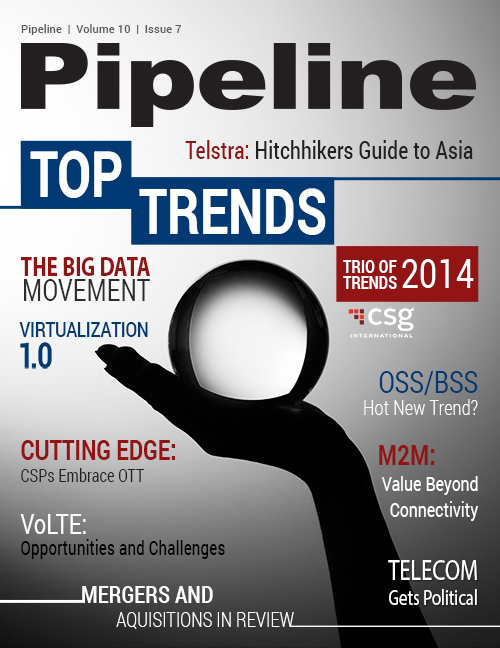Trio of Trends for 2014
A fork in the road: the evolution of the business model
“When you come to a fork in the road, take it.”
Sadly, ex-New York Yankee Yogi Berra’s “advice” isn’t sufficient as the telecom industry continues to adapt to disruption, because a single path is unlikely to lead to the same business and operational successes. Instead, the steep price tag for next-gen networks, fierce competition from a broad and diverse set of traditional and nontraditional entrants, and extreme cost pressure from recessionary economies and capital markets are forcing CSPs to take a fresh look at their business models as they approach several key forks in the road. They must be equipped to pursue multiple paths at the same time; in other words, they must fully embrace Berra’s flawed logic and be prepared to take every fork in the road.
The digital divide: network vs. service
First up, network evolution is bringing a new “digital divide” to the forefront. CSP business models are evolving down diverging paths driven by network traffic, speeds and event volumes.
On one side are the network operators still smarting from the smackdown of over-the-top (OTT) services; they believe CSPs should play to their strengths and focus exclusively on 4G’s potential to drive more usage. If “a rising tide lifts all boats,” it’s arguable that the rising tide of data, especially the burgeoning mobile-data market, the nascent M2M (machine-to-machine communications) market and “the Internet of Things,” will provide ample opportunities for revenue growth. By focusing on revenue assurance and developing high-quality, network-centric offers and wholesale in new and varied forms, network operators plan to profit by focusing on retaining their slice of an increasingly divided pie.
On the other side, CSPs point to shrinking margins and see the commoditization of voice services as an example of where network traffic is headed. Using their technological and operational knowledge and long-standing customer relationships to manage the communications services and devices that comprise consumers’ new digital lifestyles, CSPs seek to capitalize on the assets they believe command the most value.
As in any natural evolutionary process, it’s too soon to tell if either adaptation, or both, will prove successful, but whatever the outcome, we expect the divide to deepen in 2014.
From communications service provider to ICT provider
The evolution of telecom companies from communications service providers to information and communications technology, or ICT, providers is accelerating in response to consumer behavior and demand. From BYOD (“bring your own device”) to SaaS (“software as a service”), consumer trends have completely shifted business users’ expectations of professional communications and computing services. IT companies have been inundated with new requirements and are seeking support and services from their trusted technology vendors, including CSPs. Consequently, revenue derived from the ICT services of small and medium enterprises (SMEs) will increase at three times the rate of the number of SMEs by 2017, allowing ICT-savvy CSPs to derive higher revenues from existing and potential SME customers.
Cloud services will drive growth as businesses of all sizes, from large enterprises to microbusinesses, look to quickly execute new functionality, reduce their implementation risks, simplify operations, and, in general, get more bang for their buck. With the increase in mobile broadband coverage, reliability and speed, and the bundling of some key cloud offerings, CSPs are in a prime position to increase average revenue per user (ARPU) and emerge with stronger relationships with their enterprise customers. Seizing this opportunity, however, will require its own transformational effort to seamlessly sell and deliver these services, manage support costs and deliver on customers’ expectations for their experience.



















